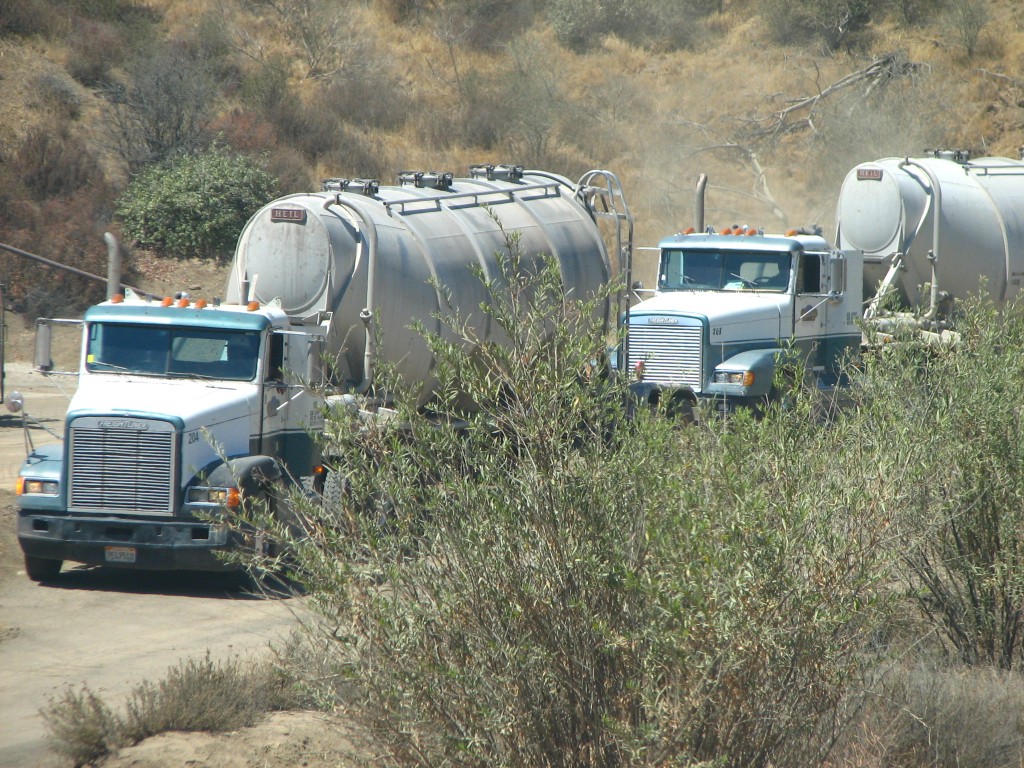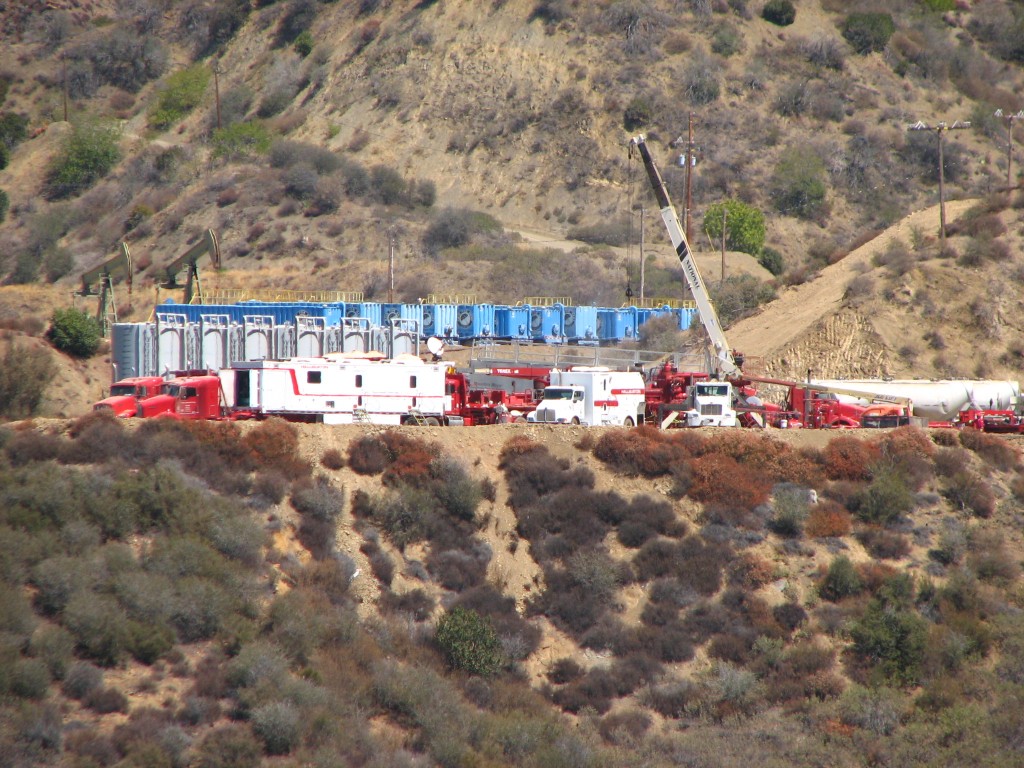Forest Officials Accept Public Comments through June 4
Last week, the U.S. Forest Service unveiled an oil company’s proposal to hydraulically fracture eight oil and gas wells on federal public land in Los Padres National Forest. The wells – located north of Fillmore in the Sespe Oil Field – would bring the field’s total number of wells fracked to 26 since 2011, making it the highest concentration of fracking along California’s central coast between San Francisco and Los Angeles.
Along with the eight wells, the oil company – Seneca Resources Corporation of Houston, Texas – is seeking permission to construct nearly two miles of new pipelines, a 12,600-gallon tank, and other industrial facilities in this remote area.
“Like most of the wells completed previously in the Sespe Oil Field, the new wells would be hydraulically fractured as part of completing the wells for production,” states Los Padres National Forest Supervisor Ken Heffner in a letter to interested parties dated May 2, 2014.
The Forest Service will accept public comments on the three-page announcement until June 4, 2014 (click here to send an automated email to the Forest Service). Then, officials state that they will prepare an Environmental Assessment (EA) and could approve the wells as early as next year. An EA is a concise, less-detailed analysis than a full Environmental Impact Statement (EIS). Under the National Environmental Policy Act, the Forest Service must prepare a full EIS for any proposal that may have a significant environmental impact, as well as for issues such as fracking that involve substantial controversy.

“Fracking eight wells and constructing two miles of pipeline in an environmentally sensitive area clearly warrants a full, thorough, and careful analysis in an EIS,” said Jeff Kuyper, executive director of Los Padres ForestWatch, a nonprofit organization based in Santa Barbara that monitors fracking and oil drilling throughout Los Padres National Forest. “There’s too much at stake to fast-track fracking in our forest.”
Hydraulic fracturing – commonly known as “fracking” – is a process whereby water, sand, and thousands of gallons of chemical additives are injected underground to break apart rock formations and stimulate the extraction of oil and gas. The technique has come under increasing scrutiny from scientists, regulators, and the public due to concerns with groundwater contamination, surface water pollution, water consumption, and public health. Hundreds of fracking chemicals are known to be toxic to humans and wildlife, and several are known to cause cancer.
Located approximately four miles north of Fillmore in Ventura County, the Sespe Oil Field is one of the oldest oil fields in California. Approximately half of the field’s oil and gas wells are located on land in Los Padres National Forest. The other half are found throughout a patchwork of private land that is intermingled with the national forest land.
The lands in and around the oil field provide important habitat for endangered California condors, including the Sespe Condor Sanctuary, the Hopper Mountain National Wildlife Refuge, and the Sespe Wilderness. The headwaters of several mountain streams originate in the Sespe Oil Field before emptying into Sespe Creek, which is formally-designated critical habitat for endangered southern steelhead and is classified as an “Area of High Ecological Significance” by the U.S. Forest Service.
The Los Padres National Forest is the only forest in California with oil drilling and fracking taking place within its boundaries. Oil wells in the Sespe Oil Field have been fracked 18 times in the last three years, without any public notice or environmental studies and with minimal regulatory oversight. More fracking occurs in the Sespe Oil Field than anywhere else along California’s central coast between San Francisco and Los Angeles.

The State of California’s Department of Oil, Gas & Geothermal Resources plans to release a draft environmental report studying the potential impacts of fracking sometime in 2015. The federal Bureau of Land Management – which oversees drilling on national forests and other federal lands – has no immediate plans to finalize its 2013 draft rules governing fracking. Because of the continued unknown risks of fracking, California legislators recently introduced S.B. 1132 to impose a temporary moratorium on fracking throughout the state until a comprehensive study of the environmental and public health impacts of fracking is complete. That bill remains in the early stages of the legislative process.
“These are public lands, located right in the heart of some of the most environmentally sensitive watersheds in the forest,” said Kuyper. “It’s too risky to allow fracking and other controversial oil extraction techniques to occur until regulations are finalized and adequate safeguards are in place to protect our watersheds. Every precaution should be taken to protect these public forest lands.”
Click here to visit the Forest Service’s planning page for this project.







Comments are closed.